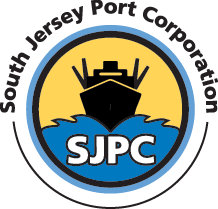The SJPC anticipates winter steel volumes, savaged by the COVID-19 global recession and punishing tariffs, will increase significantly this winter as manufacturers replenish inventories to gear up production as COVID-19 vaccines come online.
Manufacturers and steel importers depend on the South Jersey Port as a trusted link in their supply chain.
With harsh winters closing the Saint Lawrence Seaway by creating unsafe, unreliable shipping to Chicago, Cleveland, and Milwaukee, steel shippers have opted for SJPC’s safer, more reliable Balzano Marine Terminal for their winter shipments to the industrial Mid-West.
Teaming with Delaware River Stevedores(DRS), SJPC has had an excellent multi-year experience in handling steel year-round but critically during the winter months. The entire team is very customer-focused. We work with the customers. We listen and we respond.
We are very sensitive to the careful and timely handling of our steel coils off the ship, onto trucks, onto rail cars, into warehouses, and out of the terminal and onto the customer. We work to earn our customers’ trust and business.
“We take it very seriously,” Andy Saporito, Executive Director and CEO explained. “We develop a close working relationship and mutual confidence between the shipper and our terminal partners DRS. Our shared focus is customer satisfaction, our customer’s success is our success.”
The SJPC’s deepwater ports are highly efficient terminals with dock-side rail and warehousing. They are within a day’s truck haul of the northeast, the midwestern industrial base of the United States and eastern Canada. A roll of steel off-loaded in our terminals, can arrive at plants throughout the Midwest, eastern Canada and from Montreal to the Carolinas in as little as a half a day…and it arrives as pristine as humanly possible.
Committed to ensuring seamless cargo movement from ship to dockside rail, we recently completed a rebuild of our rail loading dock and rail siding in time for the winter steel season and are investing $7 million – financed by the New Jersey Department of Transportation (NJDOT) for further upgrades. NJDOT has provided SJPC over $10 million in the last five years for rail improvement projects through the state’s Rail Freight Assistance Program (RFAP). “Whether on the road, rail or in the water, strong transportation access is at the heart of economic success,” NJDOT Commissioner Diane Gutierrez-Scaccetti said.
Approximately 40% of the winter steel moving through SJPC’s Balzano Marine Terminal in Camden is transported by “Class A” rail to Mid-West and Mid-South manufacturing locations in Illinois, Michigan, Ohio, Wisconsin, Tennessee, and the Carolinas.
Safe handling is a critical component to the ongoing success of the program. Recently we installed high-intensity lighting in warehouses devoted to steel storage and we hold regular quality control meetings with Tata and Thyssen Krupp to adhere to safe handling standards aimed at minimizing worker injuries and damage to steel coils.
Our team has become experts in the safe and careful handling of these very expensive rolls of steel and we are focused on zero damage.
Tata Steel Europe and Thyssen Krupp Steel North America use the Balzano Marine Terminal throughout the year but particularly during the winter to bring steel coils from the Netherlands and Germany to their manufacturing plants in Pennsylvania and Ohio and to other buyers throughout the Midwest.
In 2019, Tata Steel International and Thyssen Krupp Steel accounted for 16% of the SJPC steel imports.
NLMK, the Russian steel company, accounts for over 60% of SJPC’s total ferrous product imports, operating year-round at our Paulsboro Marine Terminal to supply their three U.S. finishing plants.
Tariffs on steel imports combined with the COVID pandemic depressed our steel import business in 2020, particularly NLMK’s imports from Russia. Imports of Brazilian steel are now ramping to marginally mitigate the decline in Russian steel imports but Brazilian volume is constrained by quota limits.
The SJPC expects that trend to reverse this season as vaccines to neutralize the virus come online and a new administration takes over in Washington help to reinvigorate the global economy and consumer demand.
A key indicator of the strength of our winter steel business and a harbinger of things to come will be the first quarter of 2021. While still early in the anticipated recovery, the strength of our winter steel business through January, February, and March will be a good indicator of the anticipated rebound.



